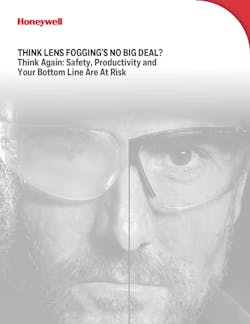Think lens fogging's no big deal? Think again: safety, productivity and your bottom line are at risk
Fogging is the number one problem faced by safety eyewear users. It occurs widely across industries – from construction, manufacturing, chemical and utilities, to oil and gas – and across applications. Fogging on untreated lenses is nearly impossible to avoid no matter where work is conducted, and it might seem like no big deal.
But maintaining a clear, fog-free view is vital to the wellbeing of workers and employers alike. When tasks are conducted with fog-obscured vision, workers risk not only eye injury but also bodily harm. It takes seconds – or less – for a potentially catastrophic event to occur: a slip or fall; getting struck by equipment or caught in machinery; or coming into contact with harmful chemicals or electrical current. Productivity and compliance are at serious risk, too.
With so much at stake, it’s easy to see why employers seek effective anti-fog solutions, and why eyewear manufacturers strive to develop longer-lasting anti-fog coatings. But not all AF-coated lenses deliver the same level of protection or consistency, and until now lenses with anti-fog coating didn’t necessarily stand up to the demands of the workplace. Recent innovations in anti-fog lens coating have dramatically improved performance. This paper examines the dangers and costs of fogging and the differences among anti-fog lens coatings, to help guide safety managers in selecting those that deliver the consistent, long-lasting results required to keep workers safe and productive, and to support employers’ bottom lines.
